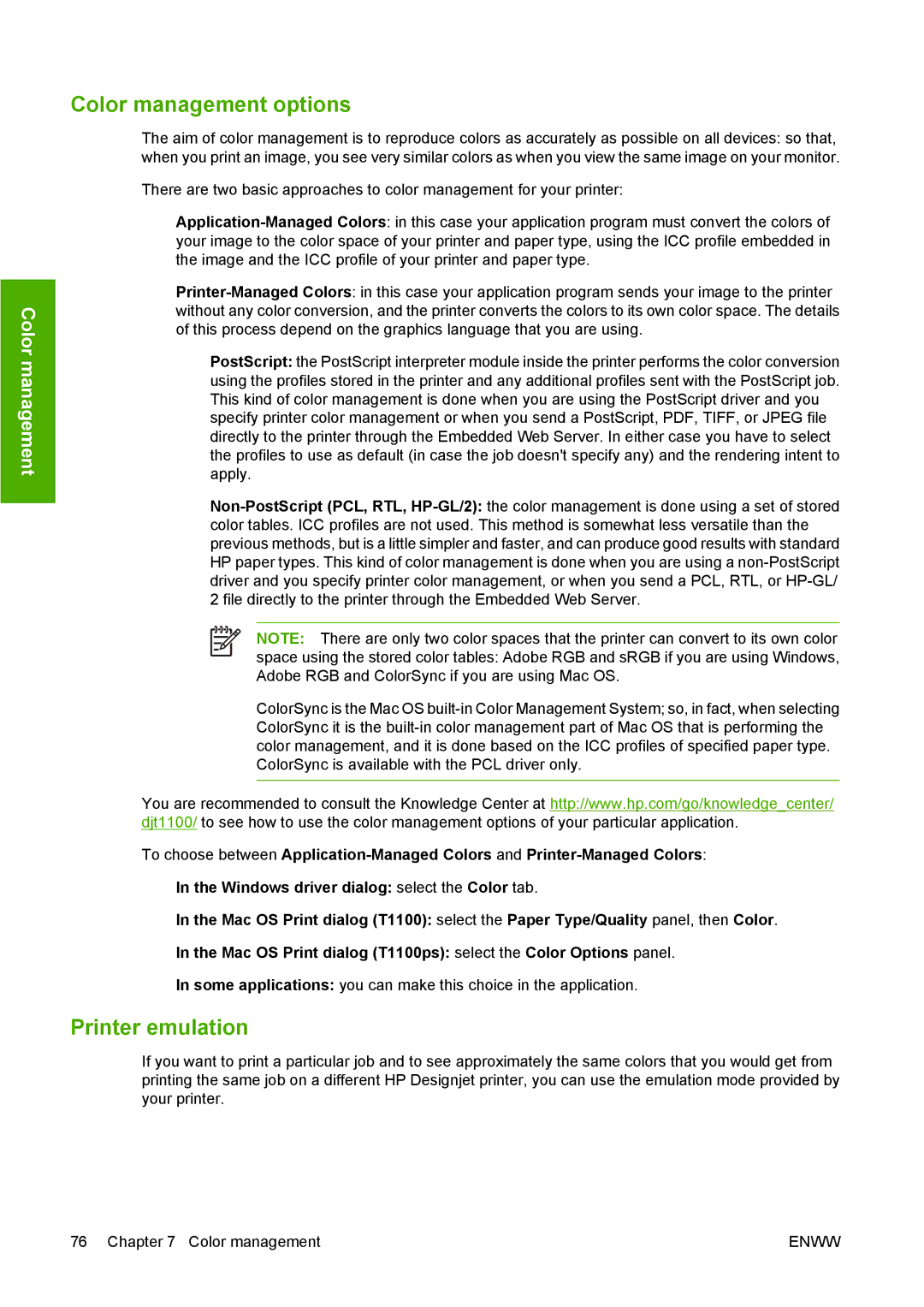
Color management
Color management options
The aim of color management is to reproduce colors as accurately as possible on all devices: so that, when you print an image, you see very similar colors as when you view the same image on your monitor.
There are two basic approaches to color management for your printer:
●
●
●PostScript: the PostScript interpreter module inside the printer performs the color conversion using the profiles stored in the printer and any additional profiles sent with the PostScript job. This kind of color management is done when you are using the PostScript driver and you specify printer color management or when you send a PostScript, PDF, TIFF, or JPEG file directly to the printer through the Embedded Web Server. In either case you have to select the profiles to use as default (in case the job doesn't specify any) and the rendering intent to apply.
●
NOTE: There are only two color spaces that the printer can convert to its own color
space using the stored color tables: Adobe RGB and sRGB if you are using Windows, Adobe RGB and ColorSync if you are using Mac OS.
ColorSync is the Mac OS
You are recommended to consult the Knowledge Center at http://www.hp.com/go/knowledge_center/ djt1100/ to see how to use the color management options of your particular application.
To choose between
●In the Windows driver dialog: select the Color tab.
●In the Mac OS Print dialog (T1100): select the Paper Type/Quality panel, then Color.
●In the Mac OS Print dialog (T1100ps): select the Color Options panel.
●In some applications: you can make this choice in the application.
Printer emulation
If you want to print a particular job and to see approximately the same colors that you would get from printing the same job on a different HP Designjet printer, you can use the emulation mode provided by your printer.
76 Chapter 7 Color management | ENWW |
